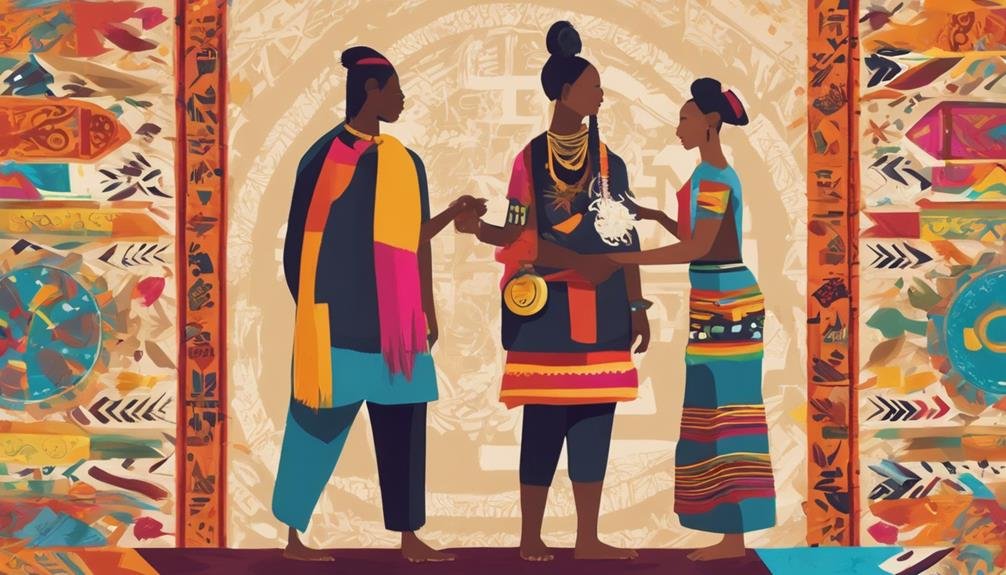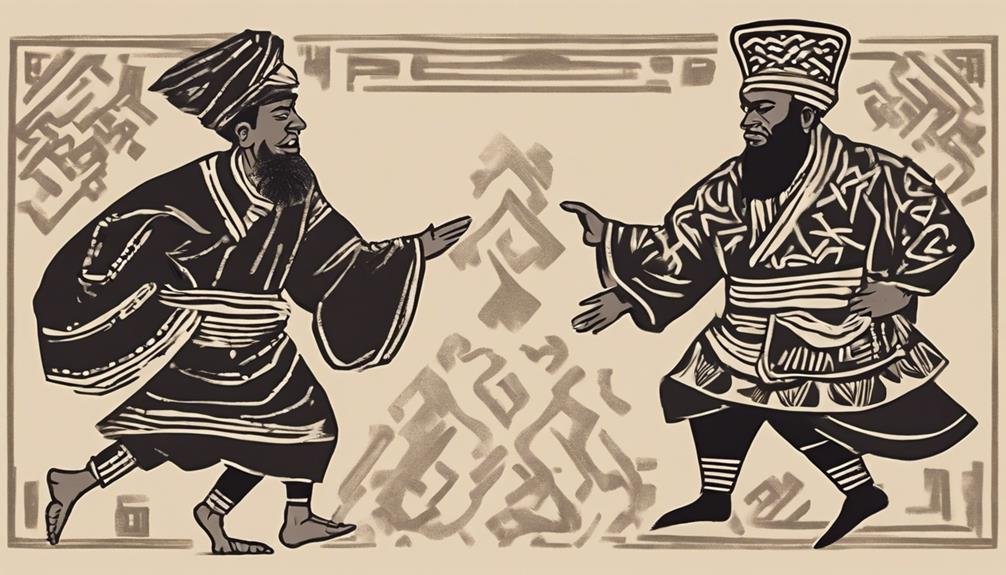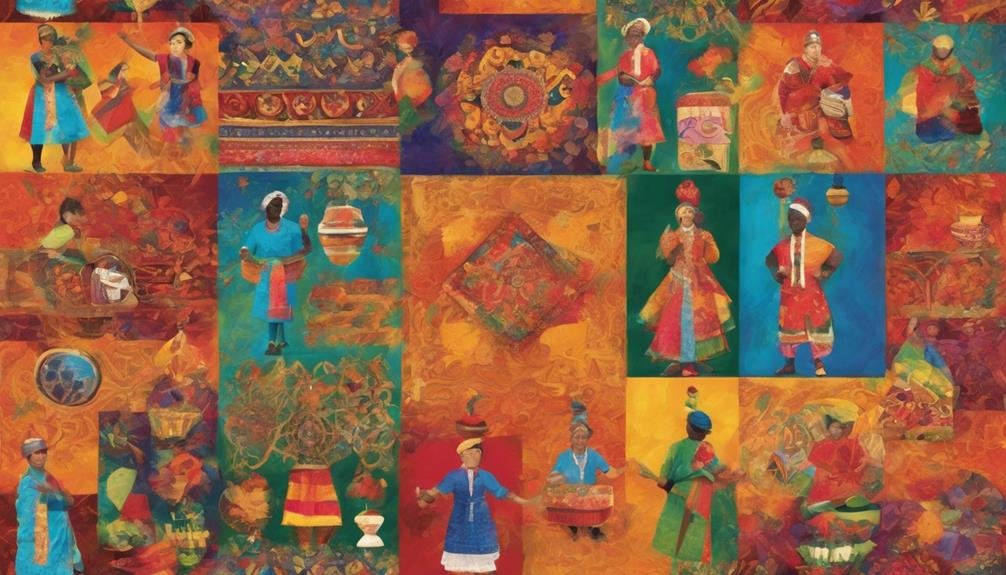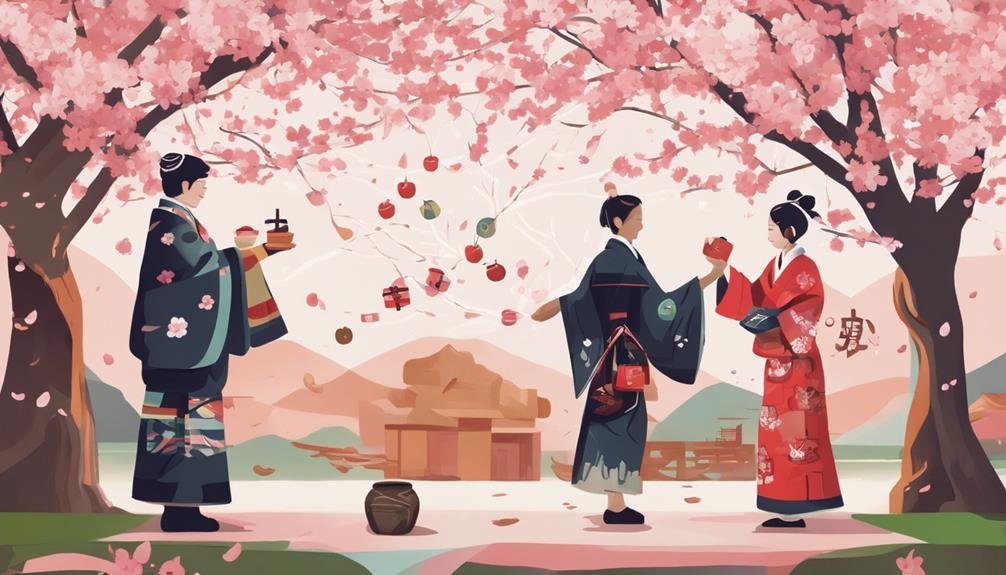When considering cultural appropriation versus appreciation, examining the intentions and impacts of engaging with another culture is essential. Are you adopting elements respectfully, or are you simply borrowing without acknowledgment? You might think these terms are interchangeable, but they carry distinct meanings and consequences. Recognizing the power imbalance at play can help you navigate these subtleties. By exploring real-life examples, you can better understand how to engage with cultures respectfully and support authentic artisans. So, how do you guarantee your actions promote mutual respect and genuine appreciation?
Key Takeaways
- Cultural appreciation involves respectful engagement, understanding, and valuing a culture’s traditions and practices.
- Cultural appropriation often involves taking elements from a culture without permission or understanding, leading to misrepresentation.
- Power dynamics play a role; appropriation typically benefits dominant cultures at the expense of marginalized ones.
- Appreciation fosters mutual respect, while appropriation can perpetuate stereotypes and inequalities.
- Appreciating culture requires acknowledging historical context and giving due credit to cultural origins.
Understanding Cultural Dynamics

Understanding cultural dynamics plays a pivotal role in mastering the complexities of our diverse world. When you engage in artistic appreciation, you seek to comprehend and respect another culture’s practices, traditions, and beliefs. This involves more than acknowledging differences; it necessitates a genuine interest in learning about these cultural elements’ historical, social, and spiritual significance. Doing so can foster meaningful cross-cultural connections and promote inclusivity, paving the way for a more harmonious society.
In your journey of cultural appreciation, it is crucial to recognize that every culture has its own distinct identity. This identity is shaped by unique experiences and histories that deserve respect and understanding. When you appreciate culture, you’re not just observing from the outside; you’re immersing yourself in its richness and depth, which can help prevent the harm and erasure associated with cultural appropriation.
Appreciation involves a respectful acknowledgment of cultural differences and an effort to honor them. Doing so contributes to a diverse and harmonious society where every culture’s identity is valued. Embrace this journey with an open mind and heart, and you’ll enrich your understanding of the world.
Intentions and Impact
When considering cultural intentions, are you prioritizing respect and mutual understanding, or are you leaning towards personal gain? Evaluating the impact of your actions helps you see whether you’re perpetuating stereotypes or fostering positive connections.
Engaging respectfully with cultures means recognizing the importance of intention and impact in promoting inclusivity and preserving diversity.
Understanding Cultural Intentions
Diving into cultural exchanges requires an honest look at your intentions and the impact they may have. Your cultural intentions significantly determine whether your actions fall under cultural misappropriation or cultural admiration. When you engage with a culture, ask yourself what your purpose is. Are you genuinely interested in learning and respecting the culture, or are you merely using it for personal gain or fashion? Understanding your intentions helps navigate the fine line between misappropriation and admiration.
However, having positive intentions doesn’t always mitigate the potential harm of cultural misappropriation. Even well-meaning actions can inadvertently perpetuate stereotypes or disrespect cultural traditions. Reflecting on your intentions to confirm they align with respectful engagement is essential. Consider how your actions might be perceived by those within the culture you’re engaging with.
Engaging in cross-cultural interactions with awareness and thoughtfulness fosters respectful relationships. By examining your motivations, you can better appreciate cultural elements rather than misappropriate them. This self-reflection not only benefits your understanding but also honors the culture itself. Remember, the goal is to enrich your knowledge and connections, not diminish the significance of the culture’s traditions.
Evaluating Cultural Impact
Many don’t realize that the intentions behind cultural actions often don’t align with their actual impact on the affected cultural groups. When examining cultural appropriation vs. appreciation, it’s important to understand that even well-meaning actions can cause harm. The cultural significance of certain traditions or symbols is often deeply rooted in historical contexts and power dynamics. As you engage with different cultures, it’s vital to remember how your actions might be perceived by those whose cultural heritage you’re interacting with.
Positive intentions are often cited in defense of cultural borrowing. However, appreciation vs appropriation isn’t just about the intent but the broader societal impact. You might intend to honor a culture, but the effect can be damaging if your actions perpetuate stereotypes or disrespect sacred elements. This is particularly true for marginalized communities, where cultural appropriation can reinforce existing inequalities and diminish their cultural significance.
To evaluate cultural impact effectively, consider your intentions and the historical and political dynamics. Recognize that, despite your intentions, the effect of your actions can contribute to cultural erosion or perpetuate harmful narratives.
Always aim for cultural appreciation that respects and honors the cultural significance of the traditions you engage with.
Respectful Cultural Engagement
Understanding the impact of your cultural interactions is crucial to fostering respectful cultural engagement. When you explore another culture, your intentions should be sincere, aiming to learn and appreciate, not to exploit or appropriate. Artistic appreciation is about honoring and valuing traditions, going beyond surface-level interactions. It involves a willingness to build relationships rooted in mutual respect and genuine cultural exchange. This approach enriches your understanding and honors the culture you’re engaging with.
To ensure respectful cultural interactions, seek permission and guidance from those within the culture. This step is essential in avoiding appropriation, where elements are taken without understanding or respect.
Always give credit where it’s deserved, acknowledging the origins of cultural elements you admire or use. Be mindful not to perpetuate stereotypes or misrepresentations, as these can be harmful and disrespectful.
Recognizing Power Imbalance

Power dynamics play an important role in cultural appropriation, often skewed in favor of dominant cultures that exploit marginalized ones. When these dominant cultures appropriate from marginalized cultures, they usually do so without understanding or respecting the original context, leading to a power imbalance that reinforces existing inequalities. It’s crucial to recognize that this power imbalance doesn’t just affect cultural expressions—it perpetuates harmful stereotypes and undermines the artistic integrity of marginalized groups.
For Indigenous communities, this issue is particularly urgent due to historical injustices and ongoing systemic issues. These communities often find themselves at a disadvantage, unable to protect their cultural heritage from being misused or commercialized by dominant cultures. This dynamic strips them of agency and diminishes their cultural identity.
Addressing these power imbalances is vital for fostering equity and mutual respect in cultural exchanges. By acknowledging and understanding the harmful impacts of cultural appropriation, you can create a more equitable cultural landscape. You also ensure that cultural engagement is respectful and equitable, promoting genuine appreciation rather than appropriation. This awareness paves the way for cultural interactions that honor and respect all cultures involved.
Examples of Appropriation
When you post photos from a powwow without permission or wear a headdress just for social media likes, you’re engaging in cultural appropriation. Using cultural symbols and practices without understanding their significance trivializes them and turns meaningful traditions into commodities. This behavior disrespects the culture, perpetuates stereotypes, and erases the value of cultural contributions.
Costume Misuse for Attention
Many people mistakenly use cultural attire as mere costumes for attention, which is a clear example of cultural appropriation. When you wear costumes from Indigenous cultures without understanding their significance, you’re engaging in a practice that strips away the rich history and meaning behind these garments. Cultural attire isn’t just fabric but part of a community’s identity and story. Using it for personal gain, such as fashion statements or entertainment, diminishes its value and disrespects the culture it represents.
For instance, you might think you’re celebrating the culture when you dress in traditional clothing or accessorize with items like headdresses or sacred jewelry. However, if you don’t acknowledge their history or meaning, you’re contributing to the erasure of authentic traditions. This misuse can perpetuate harmful stereotypes, reducing a complex culture to a one-dimensional caricature.
Appropriating such costumes for attention minimizes their cultural heritage and significance. Approaching these cultural elements with respect and awareness is crucial, ensuring that appreciation rather than appropriation guides your actions.
Unauthorized Cultural Symbols
Shifting from costume misuse, another prevalent form of cultural appropriation is the unauthorized use of cultural symbols. You might’ve seen Native American headdresses worn at music festivals. This isn’t just a harmless fashion choice; it’s an example of cultural appropriation that perpetuates harmful stereotypes. These headdresses hold deep significance and are earned through acts of bravery and respect within Native communities.
Similarly, consider the misuse of Maori facial tattoos in fashion. These tattoos aren’t mere designs; they carry cultural and historical significance. When used without understanding, it disrespects the Maori culture.
The same goes for spiritual symbols like dreamcatchers. They’re not just decorations; they’ve spiritual importance, and using them without acknowledging their meaning is appropriation.
Wearing bindis as a fashion statement without recognizing their religious and cultural significance is another form of unauthorized cultural symbols. You’re not appreciating the culture; you’re appropriating it. Sporting henna tattoos without understanding their cultural and ceremonial significance also falls into this category. Each of these examples highlights the difference between cultural appropriation and cultural appreciation. Showing respect and understanding the cultures from which these symbols originate is crucial.
Commodification of Traditions
Cultural traditions can become commodified when stripped of their significance and sold for profit. You might notice this with Indigenous cultural items like dreamcatchers and totem poles, which are often mass-produced and sold without benefiting Indigenous communities. This commodification strips these items of artistic and spiritual significance and contributes to the erasure of authentic cultural expressions.
Fashion brands are notorious for this kind of appropriation. They frequently adopt traditional patterns and designs, turning them into trendy products without acknowledging or compensating the original creators. These mass-produced items lose their cultural meaning and are commercialized purely for profit, perpetuating harmful stereotypes in the process.
Sacred symbols and practices, like smudging ceremonies, are often commercialized and misrepresented for popular consumption. This disrespects the cultural origins and dilutes the practices’ spiritual essence.
Similarly, traditional foods and recipes are marketed as trendy or exotic, often without respect for their cultural roots.
Celebrating Cultural Diversity

Embracing our myriad cultures means embracing a vibrant tapestry of traditions and beliefs. You engage in meaningful cross-cultural learning by actively participating in and respecting the diverse customs surrounding you. This approach deepens your cultural appreciation and fosters an environment where cultural diversity thrives.
When you celebrate cultural diversity, you contribute to a world where inclusivity and understanding become the norm, allowing communities to flourish with creativity and innovation.
Imagine attending a cultural festival in your community. It’s not just about enjoying the music, food, or crafts; it’s an opportunity to connect with others, learn about their traditions, and appreciate the richness they bring. By doing so, you’re enriching your own life and supporting a more tolerant and interconnected society.
Every festival, dance, or cuisine you explore is a step towards a greater understanding and appreciation of the world’s vast cultural landscape.
Supporting Authentic Artisans
When you purchase authentic cultural items, you directly support the artisans and creators who bring these beautiful pieces to life. By investing in genuine works, you help promote the economic participation of Indigenous artists, allowing them to sustain their livelihoods and communities. It’s not just about buying an item; it’s about acknowledging the skill, dedication, and history embedded in every creation.
Authentic cultural items reflect traditional craftsmanship, showing diverse communities’ rich heritage and artistic expressions. These pieces are more than mere artifacts; they embody cultural stories and ancestral knowledge passed down through generations.
When you support indigenous artists by purchasing their work, you contribute to the preservation of these invaluable traditions and help keep them alive for future generations.
Moreover, your support encourages the continued practice of traditional craftsmanship, ensuring that unique skills don’t fade into obscurity. By buying from indigenous artisans, you’re making a statement about the importance of cultural heritage and artistic integrity.
You’re not just acquiring a piece of art; you’re playing an active role in safeguarding the cultural legacy of diverse communities worldwide.
Respectful Cultural Engagement

Approaching another culture respectfully is like opening a door to a world of rich stories and traditions. Engaging with cultural elements is important to seeking permission and understanding their significance. This prevents cultural appropriation and shows genuine respect.
When you immerse yourself in another culture, do so with humility and a willingness to learn. Listening to the perspectives of the culture you’re engaging with helps broaden your perspective and deepen your appreciation.
Respectful cultural engagement goes beyond surface-level interest. It requires acknowledging the historical context and power dynamics that have shaped the culture. By understanding these factors, you can assess the potential impact of your actions and avoid contributing to cultural appropriation.
Show genuine curiosity about their traditions, beliefs, and values; this illustrates that you’re not just a passive observer but an active participant in understanding their world.
Building relationships based on mutual respect and appreciation is at the heart of engaging with another culture. This means being open to continuous learning and honoring the significance of cultural practices and symbols. When you respect a culture, you contribute to a more interconnected and understanding world.
Promoting Mutual Respect
Fostering mutual respect starts with valuing and honoring cultural differences. When you learn about and honor diverse traditions and customs, you open yourself to a world of understanding and inclusivity. By connecting with others cross-culturally, you gain new perspectives that enrich your worldview. This connection isn’t just about exchanging pleasantries; it’s about genuinely engaging with people from different backgrounds, allowing for a deeper appreciation of their experiences and histories.
Respecting cultural boundaries is pivotal in this process. It means acknowledging the significance of traditions that aren’t your own and understanding that some cultural elements are sacred or sensitive. When you honor these boundaries, you show that you care about maintaining the integrity of those cultures, promoting an atmosphere of trust and respect.
Encouraging open dialogue is another essential step in promoting mutual respect. By listening to and considering diverse perspectives, you demonstrate empathy and compassion, which are key to building stronger communities. Recognizing and acknowledging cultural diversity fosters a sense of shared humanity, reminding us that we’re all part of a larger global community despite our differences. Embrace these differences with empathy, and watch your community grow more united and resilient.
Navigating Cultural Sensitivity

Understanding cultural sensitivity requires a discerning awareness and respect for the diverse tapestry of human traditions and beliefs. When you respect cultural differences, you value the unique perspectives and practices that define various communities. It’s essential to be aware of the potential harm that can arise from cultural insensitivity, as it can damage relationships and perpetuate stereotypes. Recognizing cultural nuances, you can better navigate interactions with people from different backgrounds, promoting inclusivity and mutual respect.
Navigating cultural sensitivity involves:
- Listening actively: Pay attention to the stories and experiences shared by others.
- Asking questions: Seek to understand rather than assume or judge.
- Avoiding stereotypes: Don’t generalize based on limited knowledge or media portrayals.
- Learning continuously: Cultivate an ongoing curiosity about the world’s cultures.
- Reflecting on your actions: Consider how others might interpret your behaviors.
Conclusion
Always approach respectfully and genuinely curious to navigate the fine line between cultural appropriation and appreciation. Acknowledge the cultural dynamics and power imbalances and aim to engage with cultures authentically. You’ll contribute to a more inclusive and harmonious society by supporting genuine artisans and promoting mutual respect. It is crucial to remain culturally sensitive and appreciate each culture’s richness, fostering understanding and celebrating diversity in a way that honors and uplifts all voices.
FAQs
What is cultural appropriation?
Cultural appropriation involves using elements of another culture—such as clothing, symbols, or language—without understanding or respecting their significance. Often, appropriation overlooks the context or history of these elements and may perpetuate stereotypes. It can be seen as exploitative, as it usually involves taking from marginalized cultures without acknowledging their value or contributions.
Key Points:
- Using cultural elements without respect or context
- Can perpetuate stereotypes and misunderstandings
- Often involves marginalized cultures and lacks acknowledgment
What is cultural appreciation?
Cultural appreciation means respectfully and with a genuine interest in engaging with and learning about another culture. This involves understanding the cultural significance of practices, symbols, or attire and recognizing their origins. Appreciation celebrates diversity and respects the culture’s values, history, and people.
Key Points:
- Respectful and informed engagement with a culture
- Recognizes and respects cultural significance
- Celebrates diversity and supports cultural expression
How can you tell the difference between appropriation and appreciation?
The key difference is intent and respect. Cultural appreciation involves learning and engaging with a culture in a way that honors its significance, often by seeking permission or participating respectfully. Cultural appropriation, however, consists of taking cultural elements without permission or understanding, often for personal gain or trendiness, disregarding their original context.
Key Points:
- Appreciation: Respect, learning, and honoring cultural origins
- Appropriation: Using elements for personal gain without respect
- Intent and awareness distinguish appreciation from appropriation

